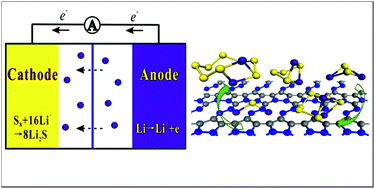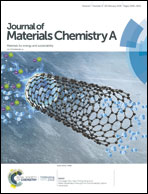A novel porous C4N4 monolayer as a potential anchoring material for lithium–sulfur battery design†
Abstract
Lithium–sulfur (Li–S) batteries have attracted considerable attention due to high theoretical specific energy and environmental friendliness. However, the shuttle of lithium polysulfides (LiPSs) has become a major obstacle for developing Li–S batteries. In this work, we explored a new C4N4 monolayer, which could be easily prepared from its bulk form using a similar mechanical exfoliation approach to that of graphene due to its smaller exfoliation energy. The C4N4 monolayer could suppress the shuttling of LiPSs and produce significant improvement in the cycling performance of Li–S batteries. Moreover, adsorption calculations revealed that polysulfide captured by C4N4 was chemisorbed with a suitable range of adsorption energies from −1.931 to −3.119 eV. Furthermore, excellent surface diffusions of LiPSs on C4N4 resulted in a fast charge/discharge rate. Moreover, to improve the electrical conductivity of C4N4, graphyne was selected to construct a C4N4/graphyne heterostructure. Based on these remarkable results, we conclude that C4N4 is a highly promising anchoring material for Li–S batteries. We hope that our studies will inspire more experimental and theoretical studies on exploring the potential of other 2D nanostructures as lithium–sulfur battery hosts.



 Please wait while we load your content...
Please wait while we load your content...